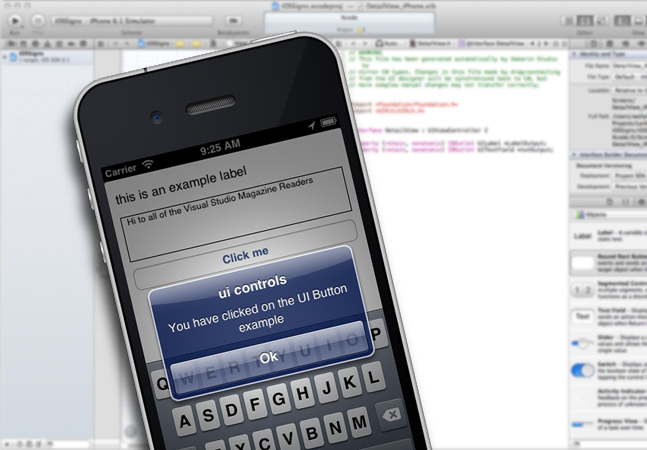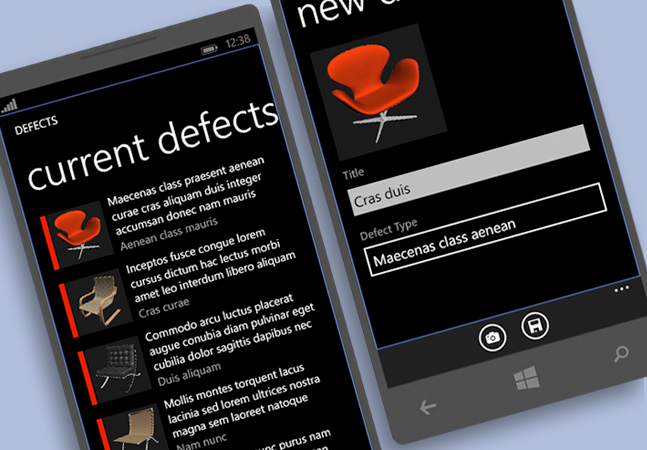
You can't "grow" a fluent API; you need to understand how developers will need (and expect) to use your API. Here's a case study of what the design process for a fluent API looks like.

Once you've delivered server-side objects to your client, you're going to need to manage them. Here's how to integrate a powerful client-side (and server-side) object manager into your application using TypeScript.

Go inside the protocol that's the backbone for today's modern, cloud-based applications.
- By Patrick Steele
- 12/23/2013

Peter continues to look at the value of imposing naming conventions on developers; but this time, he looks at the benefits related to understanding the business problem, as well as why flexibility is crucial.

Mark Michaelis walks you through the Visual Studio tooling and project setup you'll need to get the most out of your JavaScript unit testing.
- By Mark Michaelis
- 12/19/2013

Although mathematically elegant, back-propagation isn't perfect. Instead consider using particle swarm optimization (PSO) to train your neural network; here's how.
- By James McCaffrey
- 12/18/2013

Apple's latest mobile operating system is chock full of developer goodies. Learn about some of the best ones, and how to build them with C# and Xamarin.
- By Wallace McClure
- 12/17/2013

Do you hate the 259-character filename limit in some Windows file systems? So does Kenny. Here's a way to eliminate it and free your application and users from the restriction.

Mickey looks at the changes to static code analysis since Visual Studio 2010.
- By Mickey Gousset
- 12/13/2013

Learn how to cluster your numeric data using the k-means algorithm in this step-by-step guide.
- By James McCaffrey
- 12/10/2013

Here's how to implement a fluent API for a single class that supports the goals of fluent interfaces.

From Peek Definitions to scroll bar customization, here are eight of the most helpful features you'll want to explore in Visual Studio 2013.
- By Ondrej Balas
- 12/09/2013

Learn how to process CSV files using the Template Method Pattern in a sample C# application.

It's great building objects in TypeScript, but it isn't much good unless you can tie those objects into a Web page. Here's how to integrate TypeScript with Knockout (and a warning about where test driven development seems to stop).

Nick Randolph connects a Windows Phone application to the cloud to save and retrieve data, then uses a local SQLite database to cache data for offline use.
- By Nick Randolph
- 12/03/2013

Last time, Eric Vogel provided an overview of the Oculus Rift VR headset. In Part 2, he starts building a game with it.

SignalR is well-known by .NET developers as a way to handle communications. Find out what it can do in your iOS and Android apps, too.
- By Greg Shackles
- 11/26/2013

Team Foundation Server 2013's lightweight code comments could change the way your team collaborates.
- By Mickey Gousset
- 11/26/2013

Particle swarm optimization isn't usually seen as the first-choice technique for training a neural network but, as James McCaffrey demonstrates, it's a useful alternative.
- By James McCaffrey
- 11/25/2013

Fluent methods are a hot design idea and they can improve the readability of your code. However, they only make sense in specific scenarios. Here are some criteria to help you decide if you should be creating a fluent interface, and some design guidelines for when you do.

Peter returns to the topic of managing multiple users accessing the same row in a table using Entity Framework, but this time using code-first development. There are some unexpected issues to deal with.

Use custom-built .NET Framework 4.0 classes to connect an ASP.NET Web application to a SQL Server 2012 database.
- By Frank Solomon
- 11/14/2013

Want to iterate through a sequence with C++11? If so, the easiest way will be to use the range-for statement – Kenny Kerr shows you how.

Learn how to implement the Bridge Pattern in .NET by building a Windows Store radio application.

Creating Web applications with a consistent interface can be time-consuming. Using Twitter Bootstrap, you can quickly scaffold out nice-looking Web applications. Here's how.
- By Ondrej Balas
- 11/05/2013